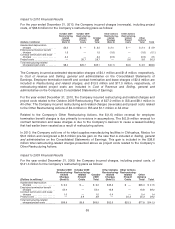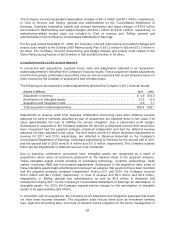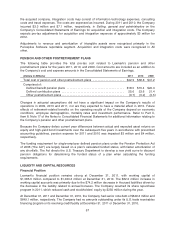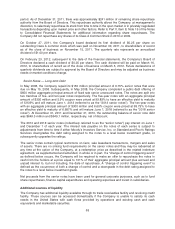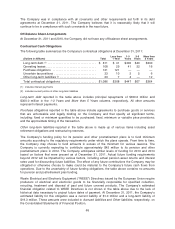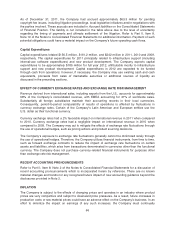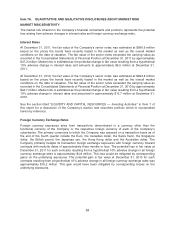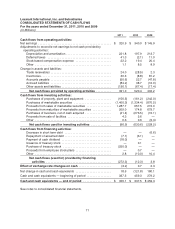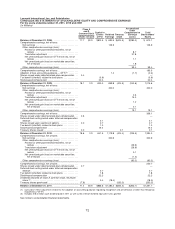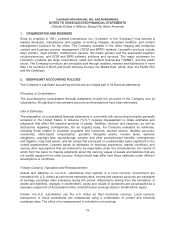Lexmark 2011 Annual Report Download - page 68
Download and view the complete annual report
Please find page 68 of the 2011 Lexmark annual report below. You can navigate through the pages in the report by either clicking on the pages listed below, or by using the keyword search tool below to find specific information within the annual report.Trade Receivables Facility
In the U.S., the Company transfers a majority of its receivables to its wholly-owned subsidiary,
Lexmark Receivables Corporation (“LRC”), which then may transfer the receivables on a limited
recourse basis to an unrelated third party. The financial results of LRC are included in the Company’s
consolidated financial results since it is a wholly owned subsidiary. LRC is a separate legal entity with
its own separate creditors who, in a liquidation of LRC, would be entitled to be satisfied out of LRC’s
assets prior to any value in LRC becoming available for equity claims of the Company. The Company
accounts for transfers of receivables from LRC to the unrelated third party as a secured borrowing with
the pledge of its receivables as collateral since LRC has the ability to repurchase the receivables
interests at a determinable price.
In September 2011, the agreement was amended by extending the term of the facility to
September 28, 2012. The maximum capital availability under the facility remains at $125 million under
the amended agreement. There were no secured borrowings outstanding under the trade receivables
facility at December 31, 2011 or December 31, 2010.
This facility contains customary affirmative and negative covenants as well as specific provisions
related to the quality of the accounts receivables transferred. Receivables transferred to the unrelated
third party may not include amounts over 90 days past due or concentrations over certain limits with
any one customer. The facility also contains customary cash control triggering events which, if
triggered, could adversely affect the Company’s liquidity and/or its ability to obtain secured borrowings
Revolving Credit Facility
Effective January 18, 2012, Lexmark entered into a $350 million 5-year senior, unsecured,
multicurrency revolving credit facility that includes the availability of swingline loans and multicurrency
letters of credit. The Credit Agreement replaces the Company’s $300 million 3-year Multicurrency
Revolving Credit Agreement entered into on August 17, 2009. Please refer to Note 21 for more
information on this new facility and refer to Note 13 for more information on the facility in place as of
December 31, 2011.
The new credit facility contains customary affirmative and negative covenants and also contains certain
financial covenants, including those relating to a minimum interest coverage ratio of not less than 3.0 to
1.0 and a maximum leverage ratio of not more than 3.0 to 1.0 as defined in the agreement. The new
credit facility also limits, among other things, the Company’s indebtedness, liens and fundamental
changes to its structure and business.
Additional information related to the 2012 revolving credit facility can be found in the Form 8-K report
that was filed with the SEC by the Company on January 23, 2012.
Credit Ratings and Other Information
The Company’s credit rating was downgraded by Standard & Poor’s Ratings Services during the first
quarter of 2009 from BBB to BBB-. On April 28, 2009, Moody’s Investors Services downgraded the
Company’s current credit rating from Baa2 to Baa3. The ratings remain investment grade.
The Company’s credit rating can be influenced by a number of factors, including overall economic
conditions, demand for the Company’s products and services and ability to generate sufficient cash
flow to service the Company’s debt. A downgrade in the Company’s credit rating to non-investment
grade would decrease the maximum availability under its trade receivables facility, potentially increase
the cost of borrowing under the revolving credit facility and increase the coupon payments on the
Company’s public debt, and likely have an adverse effect on the Company’s ability to obtain access to
new financings in the future. The Company does not have any rating downgrade triggers that
accelerate the maturity dates of its revolving credit facility or public debt.
64



